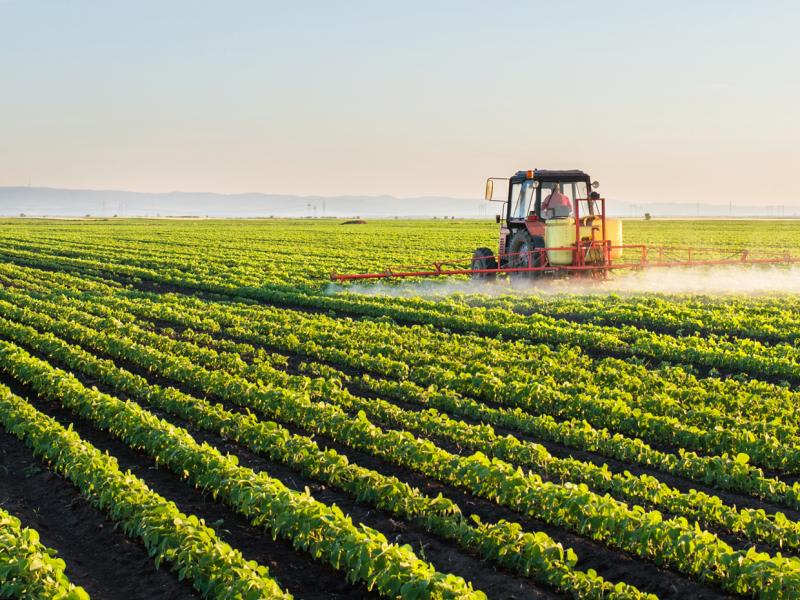Key Highlights
- The small business CGT concessions can lower or eliminate your capital gains tax when you sell an active asset, such as the family farm.
- These concessions are an excellent tool for supercharging your superannuation balance which can ultimately fund your retirement.
- Some ways to take advantage include the 15-year Exemption, the 50% active asset reduction, and the Small Business Retirement Exemption.
- It's important to know the eligibility rules and to plan early.
- Getting help from a Tax and Financial Planning professional can help you include these benefits in your overall plan.
Introduction
For many farmers, the family farm is the culmination of a lifetime of hard work, sacrifice and planning. In some cases, selling the farm is necessary, especially in circumstances where the farm owners want to retire, and the next generation do not want to be on the farm. When selling the farm Capital Gains Tax (CGT) is a major consideration, especially when approaching retirement. Thankfully, Australian tax law offers a range of CGT concessions tailored for small businesses, which can reduce or even eliminate CGT owed on the sale of assets. In addition, these concessions work extremely well in conjunction with superannuation contributions to ensure that your business assets can be converted into long term retirement savings.
This article will explore the four main CGT concessions for small businesses, how they interact with superannuation, and strategies for maximizing retirement savings using these tax benefits while tailoring it to a farming specific situation.
Eligibility Criteria for Small Business CGT Concessions
Where a capital gain arises from the sale of a CGT asset(s), there are two basic conditions that must be met to qualify for the small business CGT concessions. For the purposes of this article, an active asset would be the farmland if it is continually owned and worked on.
- Small Business Entity Test: The business must have an aggregated turnover of less than $2 million or satisfy the $6 million net asset value test.
- Active Asset Requirement: The asset in question (the farm) must be actively used in the business for at least half of the ownership period.
Additional basic conditions must be met if the farm being sold is a share in a company or an interest in a trust. However, for the purposes of this article, we will assume that any assets are held in a partnership.
Overview of Small Business CGT Concessions
Australian small business owners have access to four primary CGT concessions:
- 15-Year Exemption
- 50% Active Asset Reduction
- Retirement Exemption
- Small Business Rollover Concession*
Each concession offers unique benefits and interacts with superannuation rules in specific ways. *We have not included details for the “Small Business Rollover Concession”, as this doesn’t apply to any superannuation benefits.
15-Year Exemption
The 15-Year Exemption is designed for small business owners who have owned an asset for at least 15 years and are either retiring or are permanently incapacitated. This exemption allows business owners to eliminate CGT on the sale of eligible assets if they meet certain conditions:
- Ownership Period: The asset must have been owned for at least 15 years.
- Age Requirement: The business owner must be at least 55 years old and the contribution must be made “in conjunction with retirement”.
- Active Asset Requirement: The asset must have been actively used in the business for the required period.
This exemption provides a unique advantage for small business owners planning to transition into retirement, as it allows the full proceeds from the sale to go untaxed. There is also a unique opportunity to add a large portion of the sale proceeds into superannuation, tax free to go towards a comfortable retirement.
How much can you contribute into superannuation using the 15-year rule? For the 2024-24 FY, the maximum contribution amount is $1,780,000 per person.
50% Active Asset Reduction
The 50% Active Asset Reduction allows small business owners to reduce the capital gain on an eligible active asset by 50%. This concession is available even if the business owner doesn’t meet the 15-year ownership requirement, and it can be used in conjunction with other concessions.
While this reduction doesn’t directly involve superannuation, the reduced capital gain can help the business owner keep more funds after tax. This extra capital can then be strategically invested into superannuation through specific contributions, thereby maximizing retirement savings with tax-effective contributions.
Example: 50% Active Asset Reduction and Super Contributions
Suppose a small business owner sells an active asset for a capital gain of $200,000. By applying the 50% Active Asset Reduction, they can reduce the taxable capital gain to $100,000. The owner could then contribute the proceeds into their superannuation fund, taking advantage of the lower taxable amount while increasing their retirement balance.
Retirement Exemption
Similarly to the 50% Active Asset Reduction, the Small Business Retirement Exemption can be used if the asset doesn’t meet the 15-year ownership period. It is one of the most beneficial CGT concessions, as it allows business owners to exclude up to $500,000 of capital gains from on the sale of an asset if the proceeds are used to fund retirement. This exemption is designed to support retirement savings, particularly when paired with superannuation contributions.
The Retirement Exemption comes with specific superannuation requirements depending on the business owner’s age:
- Business Owners Over 55: They can use the $500,000 CGT exemption without needing to make a superannuation contribution. The funds can be directed into super if desired, but it’s not a requirement.
- Business Owners Under 55: If the owner is under 55, the exempted amount must be paid into a complying superannuation fund or retirement savings account to qualify for the exemption.
Example: Using the Retirement Exemption for Super
A 53-year-old farm owner sells their family farm and generates a capital gain of $400,000. By applying the Retirement Exemption, they can eliminate the CGT liability on the entire $400,000 gain. To qualify, however, they must contribute this amount to their superannuation fund. This contribution boosts their super balance and allows them to grow their retirement savings tax-free in the lead up to their retirement.
Maximising Superannuation Contributions with CGT Concessions
Meet Jack and Jill operate their own farm. Some background:
- They are both 60 and have been on the family farm for 20 years.
- They have 4 children who all do not want to continue the farming operation, so Jack and Jill decide to sell the farm and retire.
- The farm sells for $12 Million, and the resultant CGT Liability is $3 Million.
- Jack and Jill meet the eligibility criteria for a small business.
What options are available to Jack and Jill to eliminate this CGT and structure their affairs for retirement?
- Jack and Jill have owned the farm for more than 15 years, so they can use the 15-year rule to eliminate ALL the resulting CGT Liability on sale of the farm. (i.e. they can disregard the $3M Capital gain).
- Jack and Jill can each contribute up to $1,780,000 into their respective superannuation funds ($3,560,000 total) in a lump sum using the Small Business 15-year rule.
- As Jack and Jill are 60 and retired, they can access the total balance of their superannuation funds tax free and start drawing a tax-free income to meet their needs.
- As they can now access their super funds, all the investment earnings within their superannuation funds will be tax free, as well as any payments they draw out will be tax free. This means that the whole amount that is held in superannuation ($3,560,000 is in a completely TAX-FREE environment).
- Under current superannuation drawdown rules, Jack and Jill will be required to draw a minimum of 4% p.a. of their respective superannuation balances in the form of a tax free “pension payment”. On these balances, they will each need to draw $71,200 p.a. ($142,400 p.a. total).
- These tax-free payments can go towards funding Jack and Jill’s retirement now and into the future.
Integrating CGT Concessions into Superannuation Planning – Factors to consider.
As shown above, utilising the small business CGT concessions can help you unlock the family farm and turn it into tax free wealth to aid in your retirement plans. You can also significantly reduce or eliminate tax on sale of the family farm. If you find that you end up going down this route, it is important to consider a few factors.
- Combining Concessions: The 50% Active Asset Reduction and the Retirement Exemption can be combined to further reduce the taxable gain. After applying the concessions, the remaining proceeds can be contributed to superannuation, potentially tax-free.
- Early planning is key: Planning for the 15-Year Exemption or Rollover Concession years in advance can maximize tax savings and retirement contributions.
- Seek professional tax and financial planning advice: Make sure to get professional financial advice. The Small Business rules can be quite complex and require both expert tax advice on the sale, and subsequent financial planning advice on the considerations for superannuation and your broader financial situation.
Conclusion
Small Business CGT Concessions and superannuation strategies offer a powerful combination for business owners approaching retirement. By strategically applying these concessions and contributing to superannuation, business owners can significantly reduce their tax burden and secure a stable financial future. Consulting with a tax professional or financial advisor is also recommended to ensure compliance with eligibility requirements and to make the most of these valuable tax benefits.
FOR MORE INFORMATION
If you would like to schedule a consultation to optimise your tax and superannuation planning, please contact your local RSM office.
This page has been prepared by RSM Financial Services Australia Pty Ltd ABN 22 009 176 354, AFS Licence No. 238282.
As everyone's circumstances are different and this article doesn't take into account your personal situation, it is important that you consider the above in light of your financial situation, needs and objectives, and seek financial advice before implementing a strategy.
View the Financial Services Privacy Statement and Policy, Complaints Policy and Financial Services Guide





